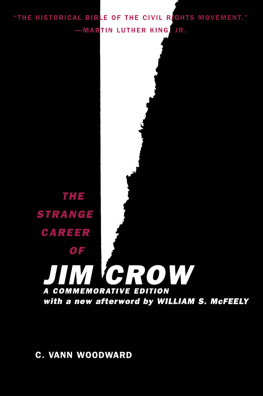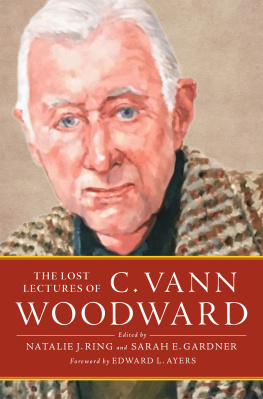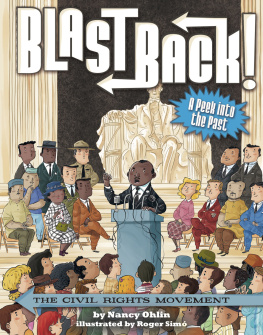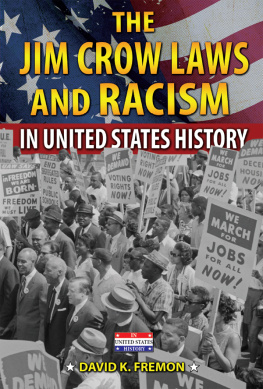The Strange Career of Jim Crow
The Strange Career
of Jim Crow
A Commemorative Edition
with a new Afterword by William S. McFeely
C. VANN WOODWARD


Oxford NewYork
Athens Auckland Bangkok Bogot Buenos Aires Cape Town Chennai
Dar es Salaam Delhi Florence Hong Kong Istanbul Karachi Kolkata
Kuala Lumpur Madrid Melbourne Mexico City Mumbai Nairobi Paris
So Paulo Shanghai Singapore Taipei Tokyo Toronto Warsaw
and associated companies in
Berlin Ibadan
Copyright 2002 by Oxford University Press, Inc.
Afterword copyright 2002 by William S. McFeely
This is a commemorative edition of The Strange Career of Jim Crow
1955, 1957, 1974 by Oxford University Press, Inc., which as a series of lectures was
delivered in 1954 at the University of Virginia as The James W Richard Lectures in History.
First published by Oxford University Press, New York in 1955
First revised edition published as an Oxford University press paperback, 1957
Second revised edition published, 1966; Third revised edition published, 1974
Published by Oxford University Press, Inc.
198 Madison Avenue, New York, New York 10016
Oxford is a registered trademark of Oxford University Press
All rights reserved. No part of this publication may be reproduced,
stored in a retrieval system, or transmitted, in any form or by any means,
electronic, mechanical, photocopying, recording, or otherwise,
without the prior permission of Oxford University Press.
Library of Congress Cataloging-in-Publication Data
Woodward, C. Vann (ComerVann), 1908
The strange career of Jim Crow / C. Vann Woodward; with a new afterword by
William S. McFeely.Commemorative ed.
p. cm.
Originally published: 1955.
Includes index.
ISBN 0-19-514690-5 (Cloth)ISBN 0-19-514689-1 (Pbk.)
1. African AmericansSegregationHistory. 2. African AmericansHistory18631877.
3. African AmericansHistory18771964. 4. ReconstructionSouthern States.
5. United StatesRace relations. 6. Southern StatesRace relations. I. Title.
E185.61.W86 2002
305.89607309034dc21 2001021668
1 3 5 7 9 8 6 4 2
Printed in the United States of America
on acid-free paper
Preface to the Third Revised Edition
The previous revision of this book, published in its original edition nearly twenty years ago, brought the account up to the events of August 1965. That was a fateful month in the strange career of segregation and the movement against it. On 6 August Congress passed and the President signed the Voting Rights Act, and on 11 August the terrible riot in Watts initiated four summers of violent racial explosions all over the country. Thus within one week a historic movement reached a peak of achievement and optimism and immediately confronted the beginning of a period of challenge and reaction that called in question some of its greatest hopes and most important assumptions. To leave the story at that critical juncture would seem to shirk an obligation to readers who have lived through the bewildering changes of subsequent years and seek an understanding of how they relate to previous developments.
The crux of the problem of relating the more recent developments to those prior to the summer of 1965 is an apparent paradoxthe paradox of the most violent revolt coming on the heels of the most encouraging progress in civil rights. The explanation is not a simple one, as we shall see, and many years will probably pass before the problem can be brought into clear perspective and all its aspects properly understood.
In the meantime it would help to recall a certain ambivalence that black people have felt all along toward integration in white America, an old ambivalence that had been buried and put aside during the long struggle against segregation and discrimination. While resenting and opposing compulsory segregation, they had clung at the same time to the desire for enough racial distinctiveness and separateness to enable them to preserve a sense of cultural identity and racial pride and unity. Even the most complete victory over segregation would not satisfy that need, for few wished to deny racial identity or lose it in a white society. The ambivalence created a tension between those leaders of the race who were concerned mainly with protest against racial prejudice, injustice, and segregation and those mainly concerned with the preservation and fostering of racial identity, pride, and autonomy.
Booker T. Washington, who belonged to the latter camp rather than to the former, believed that he could justify an accommodation with white supremacy that would leave the Negro free to build up the black community by self-help and thereby foster race pride and cultural autonomy. Even before his death in 1915, many blacks rejected his compromise. As the Jim Crow system expanded and Negroes were subjected to ever more humiliation, the Washington doctrine of racial pride and voluntary community autonomy seemed more and more hollow and false. It could be seen as an accommodation to compulsory segregation, a submission to white supremacy. New leaders insisted that the goal of racial identity and autonomy would have to give way to the struggle against forcible segregation, that the destruction of the Jim Crow system and the regaining of civil rights had to come first. For the next half-century the black leaders were mainly preoccupied with that struggle, and the idea of a voluntary Negro community virtually disappeared from respectable discussion.
The felt need and legitimate concern for black community remained lodged in the peoples minds even though subordinated to the struggle against segregation. By 1965, however, when victory over legal Jim Crow at last seemed almost assured, the suppressed yearning for separate racial identity burst forth with startling force. Its spokesmen accused civil rights leaders of asking that racial identity be forfeited and offering integration as a substitute. But integration with white culture, they declared, was a betrayal of racial identity and an insult to racial pride.
Hence the paradox of victory of the civil rights movement coinciding with violent escalation of protest. The new outburst was protesting something else. Its leaders were to offer some strange programsall the old varieties of black nationalism, including the back-to-Africa one, and many new ones as well. Some expressions of the impulse were irrational and some were violent, but behind them were genuine needs that the struggle against segregation had not fulfilled.
This revision is confined almost entirely to the addition of a chapter treating events since August 1965. Those readers interested in scholarly disputes over interpretations of the previous history offered in earlier chapters may consult the authors account in The Strange Career of a Historical Controversy in his American Counterpoint: Slavery and Racism in the North-South Dialogue (1971).
c. v. w.
New Haven
October 1973
Preface to the Second Revised Edition
The ten years that have passed since the original edition of this book was published have been crowded with unanticipated developments and revolutionary changes at the very center of the subject under consideration. The old edition had begun to suffer under some of the handicaps that might be expected in a history of the American Revolution published in 1776, or a history of the First Reconstruction dated 1865. The intervening years of social upheaval and political travail since 1955 have inevitably altered the perspective from which the earlier history was viewed. They have magnified the significance of some things and diminished the significance once attached to others. They have also stirred deeper emotions, aroused larger expectations, and provoked quicker tempers and shorter tolerance for divergent views than prevailed in discussions of the subject a decade ago.
Next page










